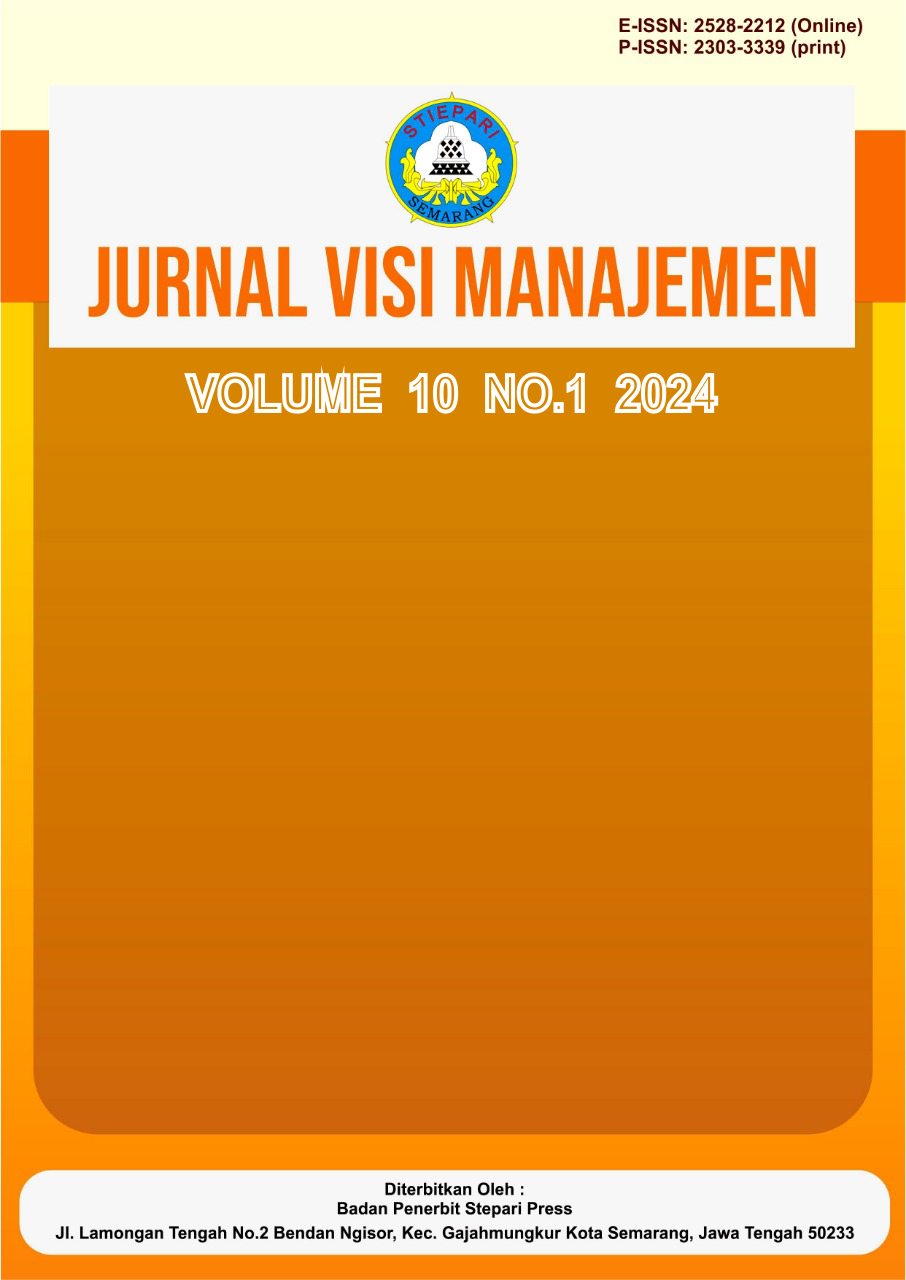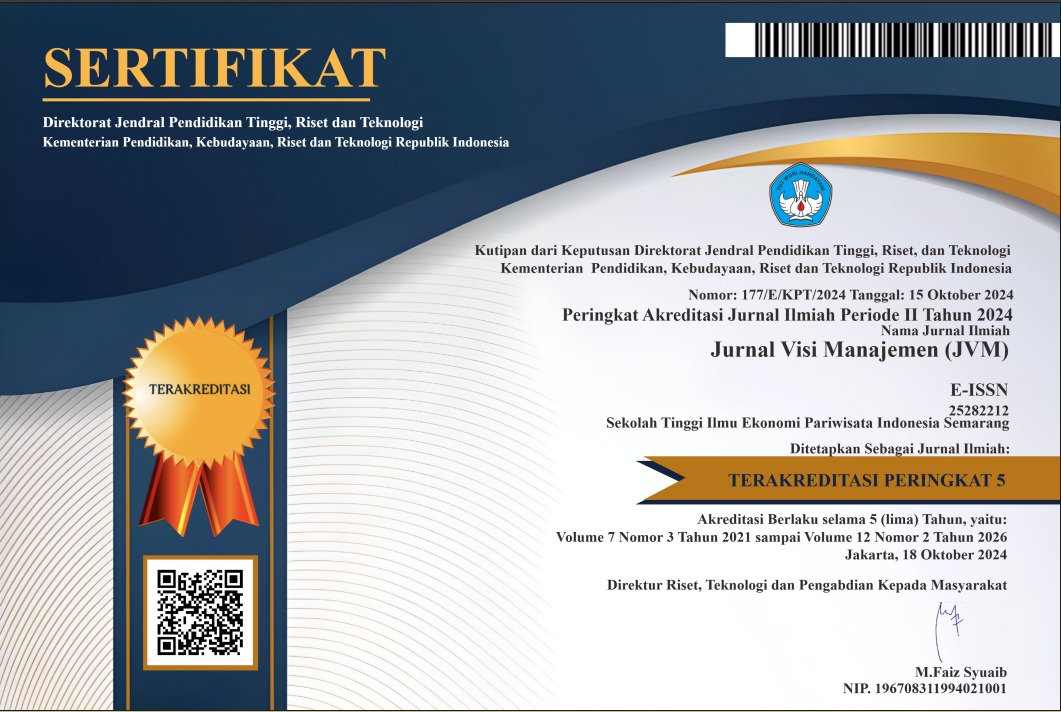Pengaruh Volatilitas Ekuitas dan Leverage terhadap Risiko Investasi
DOI:
https://doi.org/10.56910/jvm.v10i1.556Keywords:
Equity Volatility, Leverage, Investment Risk, Debt Overhang, Equity Option ValueAbstract
This study aims to analyze the impact of equity volatility and leverage on investment risk, focusing on the relationship between debt overhang and equity option value. Through a qualitative literature review, this research reveals that equity volatility plays a role in reducing companies' incentives to invest, especially amid market uncertainty. Meanwhile, high leverage can worsen a company's inability to invest due to the heavy debt burden. The phenomenon of debt overhang causes companies to be reluctant to invest because the benefits generated from such investments are primarily enjoyed by creditors. This study provides valuable insights into the interaction between equity volatility, leverage, and debt overhang in corporate investment decision-making, as well as the importance of effective financial risk management.
References
Abel, A. B., & Eberly, J. C. (2011). How q and cash flow affect investment without frictions: An analytic explanation. Review of Economic Studies, 78(4), 1179–1200. https://doi.org/10.1093/restud/rdr029
Alfaro, I., Bloom, N., & Lin, X. (2018). The finance uncertainty multiplier. National Bureau of Economic Research.
Arellano, C., Bai, Y., & Kehoe, P. J. (2019). Financial frictions and fluctuations in volatility. Journal of Political Economy, 127(5), 2049–2103. https://doi.org/10.1086/704083
Baker, S. R., Bloom, N., & Davis, S. J. (2016). Measuring economic policy uncertainty. Quarterly Journal of Economics, 131(4), 1593–1636. https://doi.org/10.1093/qje/qjw024
Bhamra, H. S., Kuehn, L. A., & Strebulaev, I. A. (2010). The levered equity risk premium and credit spreads: A unified framework. Review of Financial Studies, 23(2), 645–703. https://doi.org/10.1093/rfs/hhq010
Bharath, S. T., & Shumway, T. (2008). Forecasting default with the Merton distance to default model. Review of Financial Studies, 21(3), 1339–1369.
Black, F., & Scholes, M. (1973). The pricing of options and corporate liabilities. Journal of Political Economy, 81(3), 637–654. https://doi.org/10.1086/260062
Bloom, N. (2009). The impact of uncertainty shocks. Econometrica, 77(3), 623–685.
Campbell, J. Y., & Taksler, G. B. (2003). Equity volatility and corporate bond yields. Journal of Finance, 58(6), 2321–2350. https://doi.org/10.1046/j.1540-6261.2003.00613.x
Chang, H., D'Avernas, A., & Eisfeldt, A. L. (2024). Bonds versus equities: Information for investment. The Journal of the American Finance Association, 79(6), 3893–3941. https://doi.org/10.1111/jofi.13396
Choi, J., Richardson, M., & Whitelaw, R. F. (2022). Capital structure priority effects in durations, stock-bond comovements, and factor pricing models. Review of Asset Pricing Studies, 12(3), 706–753.
DeMarzo, P. M., & He, Z. (2021). Leverage dynamics without commitment. Journal of Finance, 76(3), 1195–1250. https://doi.org/10.1111/jofi.12993
Eisfeldt, A. L., & Papanikolaou, D. (2013). Organization capital and the cross-section of expected returns. Journal of Finance, 68(4), 1365–1406. https://doi.org/10.1111/jofi.12027
Gilchrist, S., Sim, J. W., & Zakrajšek, E. (2009). Credit market shocks and economic fluctuations: Evidence from corporate bond and stock markets. Journal of Monetary Economics, 56(4), 471–493.
Hennessy, C. A. (2004). Tobin's q, debt overhang, and investment. Journal of Finance, 59(4), 1717–1742. https://doi.org/10.1111/j.1540-6261.2004.00672.x
Jensen, M. C., & Meckling, W. H. (1976). Theory of the firm: Managerial behavior, agency costs, and ownership structure. Journal of Financial Economics, 3(4), 305–360.
Kasih, E. W., & Kholifah, N. (2022). Analisis pengaruh profitabilitas, struktur aset dan likuiditas terhadap struktur modal (studi empiris pada perusahaan manufaktur sektor industri dasar dan kimia yang terdaftar di Bursa Efek Indonesia tahun 2015-2017). Studia Ekonomika, 18(1), 26–39. https://doi.org/10.70142/studiaekonomika.v18i1.88
Kusnanto, E., Permana, N., & Yulianti, G. (2022). Intellectual capital, institutional ownership, profitability on financial awareness with cash flow volatility as an intervening variable. Jurnal Ilmiah Akuntansi Dan Humanika, 12(1), 307–323.
Myers, S. C. (1977). Determinants of corporate borrowing. Journal of Financial Economics, 5(2), 147–175. https://doi.org/10.1016/0304-405X(77)90015-0
Titman, S., & Tsyplakov, S. (2007). A dynamic model of optimal capital structure. Review of Finance, 11(3), 401–451. https://doi.org/10.1093/rof/rel014







